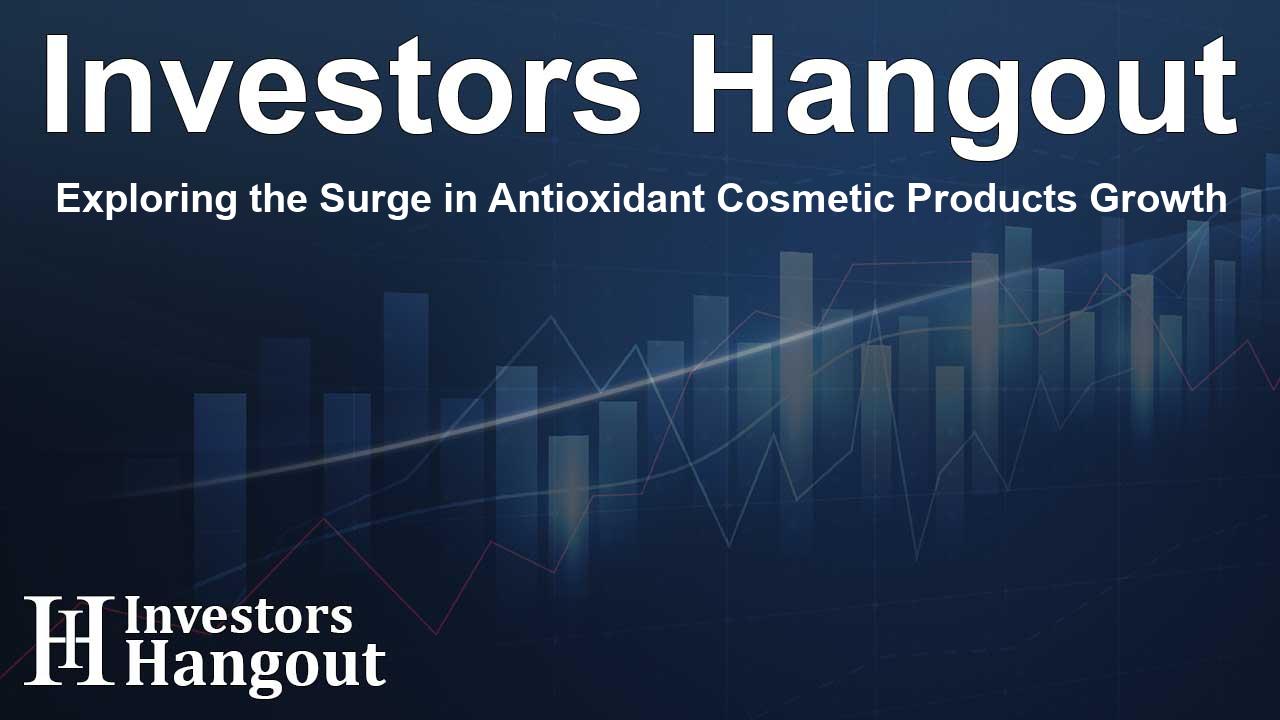Exploring the Surge in Antioxidant Cosmetic Products Growth

Antioxidant Cosmetic Products Market Overview
The global antioxidant cosmetic products market is positioned for substantial growth, with estimates projecting an increase of USD 22.43 billion from 2024 to 2028. This expansion underscores the rising demand for skincare products that combat the effects of free radicals and oxidative stress, which are primarily responsible for premature aging and other skin concerns. According to recent data, the market is forecasted to grow at a compound annual growth rate (CAGR) of around 8.09% during this period.
Key Market Trends Driving Growth
Rise of Private-Label Brands
In the competitive landscape of cosmetic products, private-label antioxidant offerings are gaining significant traction. Retail giants are launching their brands, providing consumers with effective skincare options without the premium price tag often associated with established brands. For instance, popular beauty retailers are now offering antioxidant skincare products that are not only effective but also budget-friendly. Products like liquid illuminators and beauty oils have become staples for cost-conscious shoppers interested in enhancing their skincare routine.
Consumer Awareness and Demand
Increased awareness among consumers regarding the benefits of antioxidants has notably fueled the market's expansion. Dermatologists frequently recommend cosmetic formulations rich in antioxidants to address various skin issues ranging from dryness to premature aging. The incorporation of natural ingredients like fruits, herbs, and spices into these products is becoming a trend, promising extra benefits in improving skin health. Moreover, with social media and the advocacy of influencers, consumers are more informed about the advantages of antioxidants and how they play a crucial role in skincare.
Challenges in the Antioxidant Cosmetic Products Market
Despite the promising growth trajectory, the antioxidant cosmetic products market faces challenges such as fierce competition and price wars. Established brands are slashing prices to maintain their market share, which can affect overall product quality and safety standards. For example, some popular brands have introduced low-cost alternatives, but this has led to concerns regarding effectiveness and the risk of counterfeit products infiltrating the market.
The Role of Innovation and Technology
Impact of Artificial Intelligence
Artificial intelligence is revolutionizing the cosmetic industry by streamlining product development and marketing strategies. AI is helping companies identify consumer trends promptly and innovate formulations that meet consumer needs efficiently. For instance, AI-driven insights have been transformative in formulating products that incorporate trending ingredients like live bacteria extracts, known for promoting healthier skin. This technological integration not only enhances product functionality but also strengthens brand loyalty.
Shifts Toward Natural Ingredients
As consumers become more conscious of ingredient safety, there is a noticeable shift from synthetic to natural antioxidants in cosmetic formulations. Ingredients such as vitamin E and carotenoids are being favored for their proven benefits. This transition is largely driven by the desire for healthier, cleaner product options that align with a growing demand for sustainable and environmentally friendly practices. Manufacturers are responding accordingly by reformulating products to exclude harmful chemicals and focus on natural alternatives.
Market Segmentation and Insights
The antioxidant cosmetic products market encompasses various segments based on distribution channels, application types, and geography. Major distribution channels include both offline and online platforms, allowing for broader access to consumers. Applications range from skincare to haircare and makeup, catering to diverse consumer preferences. Geographically, the market spans regions like APAC, Europe, North America, South America, and the Middle East and Africa, with each demonstrating unique growth potentials.
Frequently Asked Questions
What drives the growth of the antioxidant cosmetic products market?
The primary drivers include rising consumer awareness about the benefits of antioxidants, the increasing demand for private-label brands, and significant product innovation.
How are private-label brands impacting the market?
Private-label brands are providing consumers with affordable yet effective alternatives, increasing market competition and attracting price-sensitive shoppers.
What challenges does the market face?
Price wars among brands and the proliferation of counterfeit products pose challenges, along with the need for continuous product quality improvements.
How is artificial intelligence influencing the industry?
AI is helping companies better understand consumer preferences, innovate product formulations, and enhance marketing strategies for antioxidant cosmetics.
What trends are emerging in ingredients for cosmetics?
The trend is shifting towards natural ingredients, with manufacturers focusing on antioxidants derived from plants and fruits, moving away from synthetic ingredients.
About Investors Hangout
Investors Hangout is a leading online stock forum for financial discussion and learning, offering a wide range of free tools and resources. It draws in traders of all levels, who exchange market knowledge, investigate trading tactics, and keep an eye on industry developments in real time. Featuring financial articles, stock message boards, quotes, charts, company profiles, and live news updates. Through cooperative learning and a wealth of informational resources, it helps users from novices creating their first portfolios to experts honing their techniques. Join Investors Hangout today: https://investorshangout.com/
Disclaimer: The content of this article is solely for general informational purposes only; it does not represent legal, financial, or investment advice. Investors Hangout does not offer financial advice; the author is not a licensed financial advisor. Consult a qualified advisor before making any financial or investment decisions based on this article. The author's interpretation of publicly available data shapes the opinions presented here; as a result, they should not be taken as advice to purchase, sell, or hold any securities mentioned or any other investments. The author does not guarantee the accuracy, completeness, or timeliness of any material, providing it "as is." Information and market conditions may change; past performance is not indicative of future outcomes. If any of the material offered here is inaccurate, please contact us for corrections.